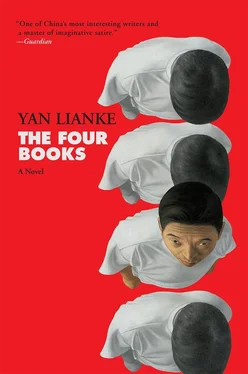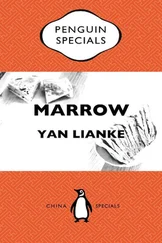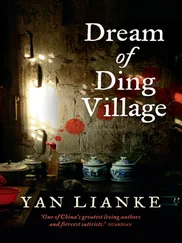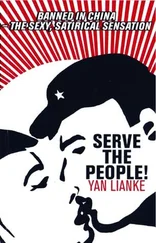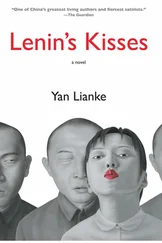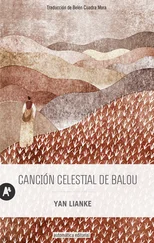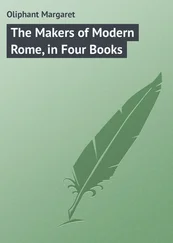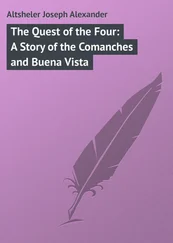Previously, I would cut open five or six of my fingers at a time, to ensure that each wheat plant would receive at least ten or twenty drops of blood. Now I needed to prick my fingers once or twice every day, and I would often need to prick them again before the old cuts were even healed, leaving all ten of my fingers a mass of scars and open wounds. Given that I always used my right hand to cut the fingers on my left hand, the resulting wounds had begun to fester, despite the fact that I would always use salt water to disinfect them. Later, I increasingly began to use my left hand to cut the fingers on my right, and once the fingers on my right hand became sliced up as well, I began cutting my palm. But then I found that I was unable to do any other work, given that I couldn’t hold my hoe, my shovel, or even the cleaver I used to prepare my food. In the end, I decided I had to preserve my palms, and particularly the right one. Therefore, when I needed to irrigate the wheat with my blood-water, I made a series of cuts along the side of my wrist. When both of my arms were so full of open wounds that it was not possible to continue cutting them, I turned to my legs, starting from the calves. I would position my legs over the buckets, letting the blood flow in. Each time I tried to hoe, weed, or carry water, these wounds would throb in agony, though the pain would gradually subside when I really began working in earnest.
By the middle of the sixth month, my fifty-two wheat stalks had all produced ears of wheat. When those ears initially appeared, they were as thick as a finger — starting out round but then becoming flat. Within a few days they were as square as segments of a wood beam. But if you touched one of these ears, you would notice that it was actually quite soft, as though the wood had water inside. I peeled off the corner of one of the ears, and discovered that inside the grains had not yet hardened, and instead they were just kernels suspended in a greenish liquid. I knew that the wheat needed to germinate, for which they needed soil and fertilizer. Accordingly, I stopped putting my blood in the bucket to irrigate the plants, and instead began treating those fifty-two plants as though they were fruit trees. I attended to them one after another, hoeing, earthing, and irrigating them. During this period, I no longer gave each plant water mixed with just a few drops of blood, but rather I cut open my wounds and filled a half bowl or more with pure blood, then used it to irrigate the plants.
The weather was unusually nice. Other crops dry up when you have day after day of searing heat, but I needed this hot sun to make sure that my plants had sufficient light and warmth every day. I’m not sure what the daily temperature was during that period; I just noticed that at midday all of the plants in the surrounding area, with the exception of those at the water’s edge, turned gray, and all of the weeds and bushes drooped over. As a result of the steel-smelting activities, all of the trees had been chopped down, and along the entire old course of the Yellow River — a sandy plateau several dozen li wide and several hundred li long — there wasn’t a single tree with a trunk thicker than a person’s arm. If you stood on top of the sand dune at midday and looked out in every direction, it appeared as though the area had been burned down. Unable to find any trees for shade, the birds would circle for a while and then would land and crawl under the bushes and weeds. In the reed pond several li away, you could frequently see parched foxes and weasels drinking and bathing. I saw flock after flock of wild birds scurrying among the reeds, hiding from the sun. If I had wanted to eat meat, I could easily have gone to the reed pond and caught as many birds as I wanted, but I didn’t dare move an inch from my wheat fields.
Of those fifty-two plants, now only forty-eight were left. The remaining four had their ears broken off when birds landed on them, on one of the few occasions I happened to step away. I therefore needed to stand guard around the clock. Flocks of hundreds of sparrows would fly over, attracted both by my wheat ears as well as by the cool shade beneath them. I erected four scarecrows, but within a few days the birds were already so comfortable with them that they wouldn’t hesitate to perch on the scarecrows’ heads and shoulders. The wheat ears started germinating and flowering on schedule, and within a few days they were already as big as ears of corn. Two of the plants were taller than I was, and when I wanted to use string to fasten the ears to wooden frames, I had to bring over a stool to stand on. When I tied those ears, the scent of fresh wheat blew toward me like sugar water mixed with oil. In this way, I guarded my wheat every day, using wild grass to build a small hut to shade myself from the sun. I sat inside my hut all day, not daring to doze off even for a moment.
Eventually, the leaves of those plants began to dry up, beginning with the lowest ones and moving upward. When the awn at the end of the ear dried up, too, it turned white, leaving it two to three inches long and as thin as a thorn. During the period when the plants were flowering, as I sat in my blind at the front of the field shooing away sparrows, I would often notice a tiny red dot dancing back and forth in the middle of the wheat ear. At first I thought that this was an illusion produced by the sun shining in my eyes, but when I brought over a stool and peered directly into the ear, which was as tall as my own head, I saw that the red dot was actually a small cloud of mist. It flew over from somewhere and circled around the tip of the wheat ear. That red mist emitted an intense smell of wheat and grass, together with the distinctive scent of freshly pollinated crops.
I climbed down from my stool.
After hesitating, I cut off a piece of the largest ear. That ear was already larger than an ear of corn, and I carefully cut out another grain from its base. When I separated the grain from the ear, it was as if I were removing a grain of corn. I examined the yellow grain in my hand, and noticed that even though the ear of wheat was bigger than an ear of corn, the grain itself was the size of a pea, though not as round. As I held the grain in my hand, the sunlight shone through the outer shell into the interior. Inside the grain there was a brown drop of viscous fluid, which quickly dried up under the sun. As a result, the grain became shriveled, like a pocket of water that has evaporated in the sun.
I bit the grain, and inside found that the brown liquid tasted like a mixture of wheat and blood. I stood beneath that stalk, gazing up at the blood-colored veins that appeared on the uppermost grain of wheat. I knew I had been too stingy with these plants. They were each as tall as a reed now and their leaves were as thick as those of a tree in spring, but the blood I had fed them had all been absorbed by those leaves and stems, and consequently only a small amount had made its way up to the wheat ear. There had been plenty of wind and sunlight, but not enough blood. In order for the blood to reach the ear, I would need to irrigate the plant with several times more than I had been using up to that point. I could no longer cherish my fingers, arms, and legs as I had before, carefully counting each drop of blood. Instead, I would have to boldly offer myself to the wheat plants. Without hesitation, I decided that evening to fill my bucket, pot, and washbasin with water and place them at the front of the field. Just as the sun was about to set, when it was no longer as hot, I sharpened my knife on a whetstone, boiled it in salt water, then began using my hoe to dig around each wheat plant until I found the roots. Then I placed the blade over the roots and, irrespective of how many wounds and scars there already were on my fingers, arms, and legs, I sliced them open again, so that my blood started pouring onto the roots of the plant. I didn’t calculate how much blood flowed in all, nor did I try to estimate how much the plant actually needed — one cup or two, one small bowl or two. The blood didn’t stop flowing until the wound started to go numb, whereupon I wrapped it with a bandage I had boiled in salt water and dried in the sun, then began to pour several bowls of water into the pool of blood at the base of the plant. After the blood and water had been absorbed by the plant’s roots, I refilled the holes with soil, then proceeded to the next plant. Again, I looked for the densest nexus of roots, then cut open my fingers and wrists and let a glass or small bowl’s worth of blood flow out.
Читать дальше
